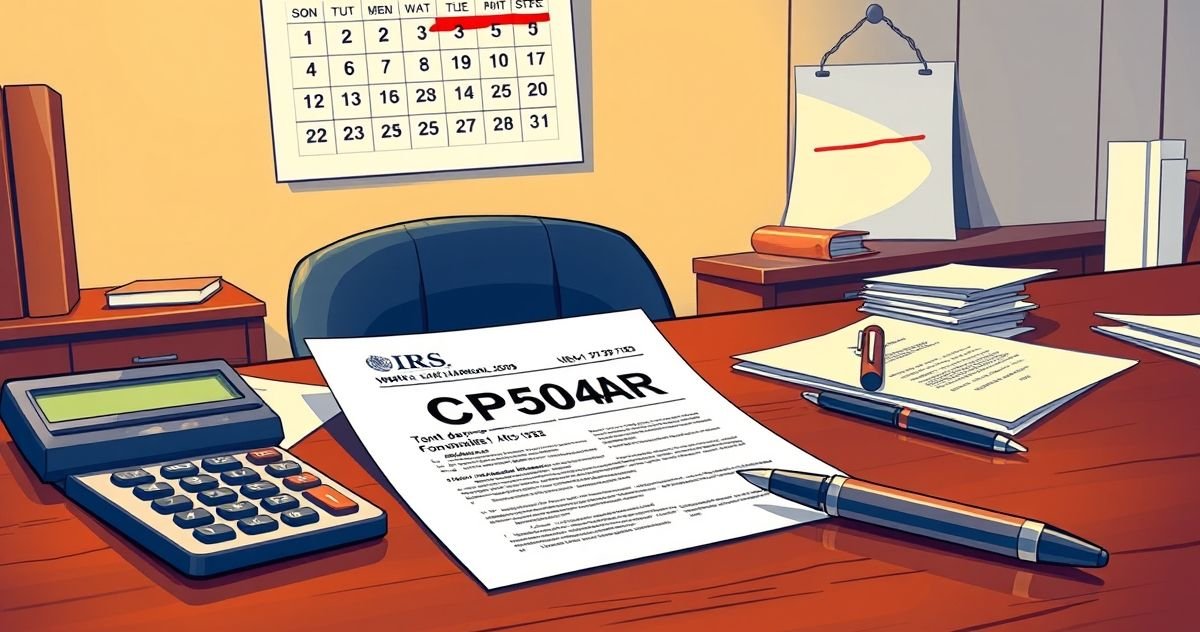What is the CP504AR Notice?
The CP504AR Notice is an official communication sent by the Internal Revenue Service (IRS) to notify taxpayers of their outstanding federal tax liabilities. Its primary purpose is to inform the taxpayer that they owe a specific amount of tax, including penalties and interest, and that immediate action is required to settle the debt. Importantly, it warns the taxpayer of the imminent steps the IRS may take to recover the owed amount, which includes the potential levy of the taxpayer’s state tax refund. Essentially, it’s a final notice before the IRS places additional collection actions into effect.
Key Features of the CP504AR Notice
- Amount Due: The notice clearly specifies the total balance due, including unpaid taxes, accrued penalties, and interest.
- Deadline for Payment: It provides a strict deadline by which the taxpayer must settle the debt to avoid further penalties or enforced collection actions.
- Warning of Actions: The CP504AR Notice explicitly states the IRS’s intention to levy the taxpayer’s state tax refund if the amount is not paid promptly.
- Contact Information: It includes IRS contact details, providing options for taxpayers to discuss the matter further if they disagree with the notice or require clarification.
Relevant Filing or Compliance Requirements
Upon receipt of the CP504AR Notice, compliance is essential. Taxpayers should review the notice carefully to ensure the accuracy of the stated amount. If the taxpayer agrees with the notice, prompt payment of the total amount is crucial. Payment can be made through various channels, such as online payment portals, checks, or money orders marked with pertinent identification details. For those unable to pay immediately, contacting the IRS to negotiate payment plans or seek an installment agreement is advisable.
Penalties or Consequences for Non-Compliance
If a taxpayer fails to comply with the CP504AR Notice, the IRS may execute a levy on the taxpayer’s state tax refund as a means to recover the debt. Continued non-payment can lead to more severe measures, including additional financial levies or liens against the taxpayer’s assets. Further, non-compliance results in continued accumulation of penalties and interest, escalating financial liabilities.
The Importance of the CP504AR Notice in Tax Resolution
The CP504AR Notice plays a critical role in tax resolution processes. It serves as a wakeup call for taxpayers who may have overlooked or deferred resolving their tax debts. Being proactive upon receipt of this notice is vital to preventing deeper financial issues. By addressing the notice promptly, taxpayers can avoid additional penalties, interests, and enforced collections such as liens or wage garnishments. Furthermore, resolving the CP504AR Notice swiftly assists in keeping the taxpayer’s financial records clean, facilitating easier financial management and compliance in future tax years. Engaging with the IRS and potentially utilizing professional tax assistance can help negotiate favorable terms for debt repayment or reduction, depending on individual circumstances.

